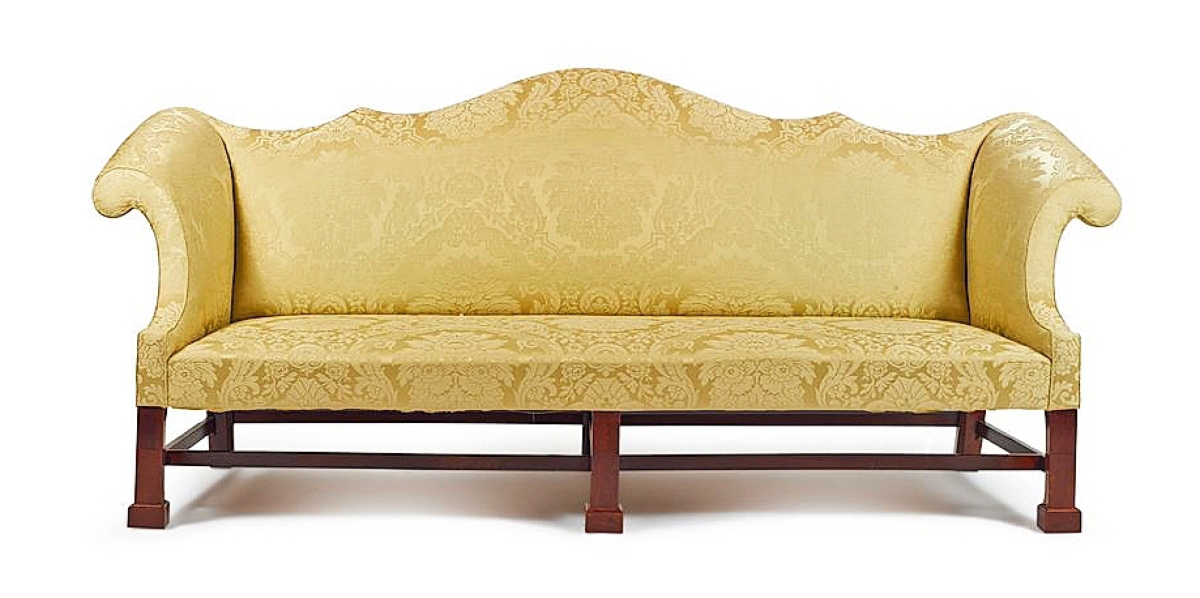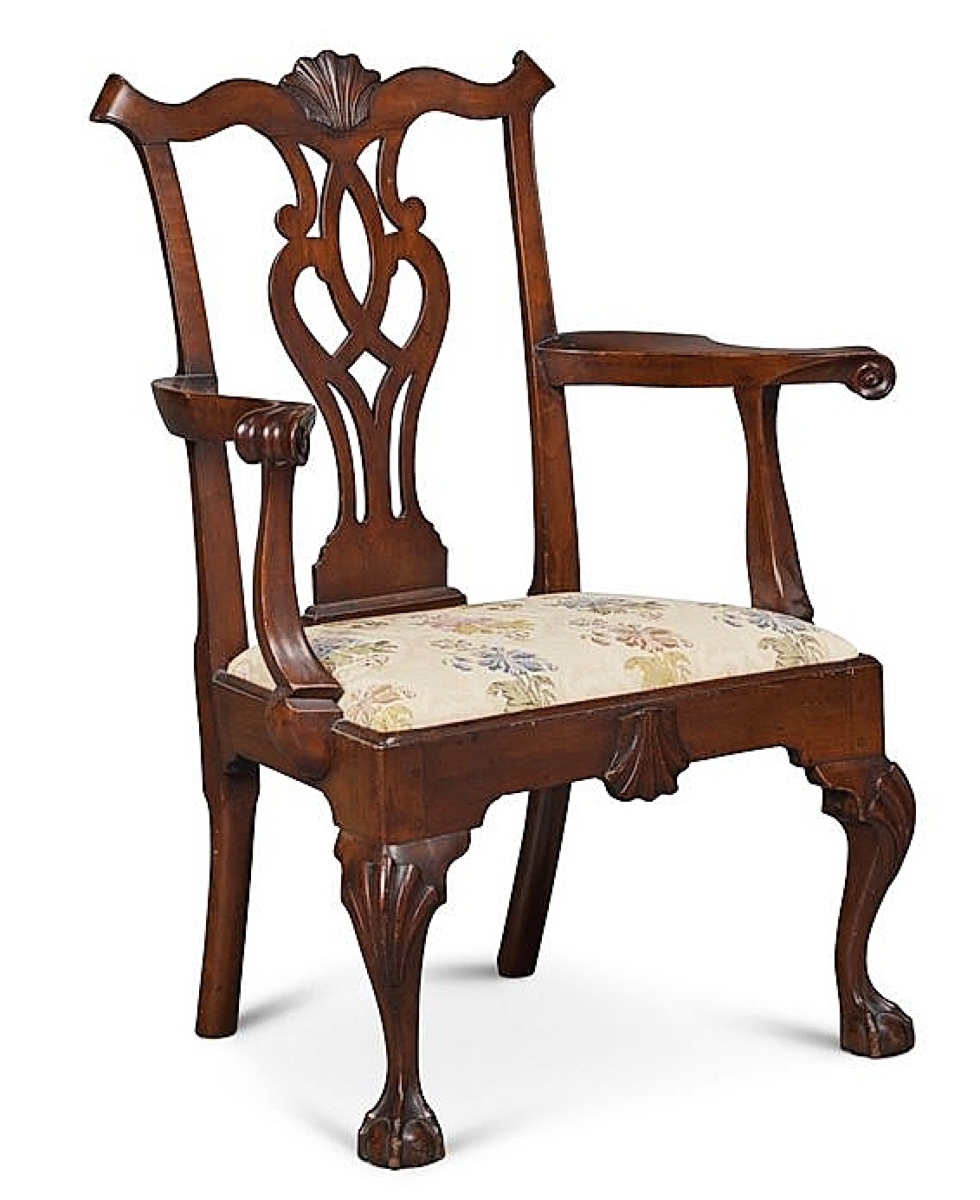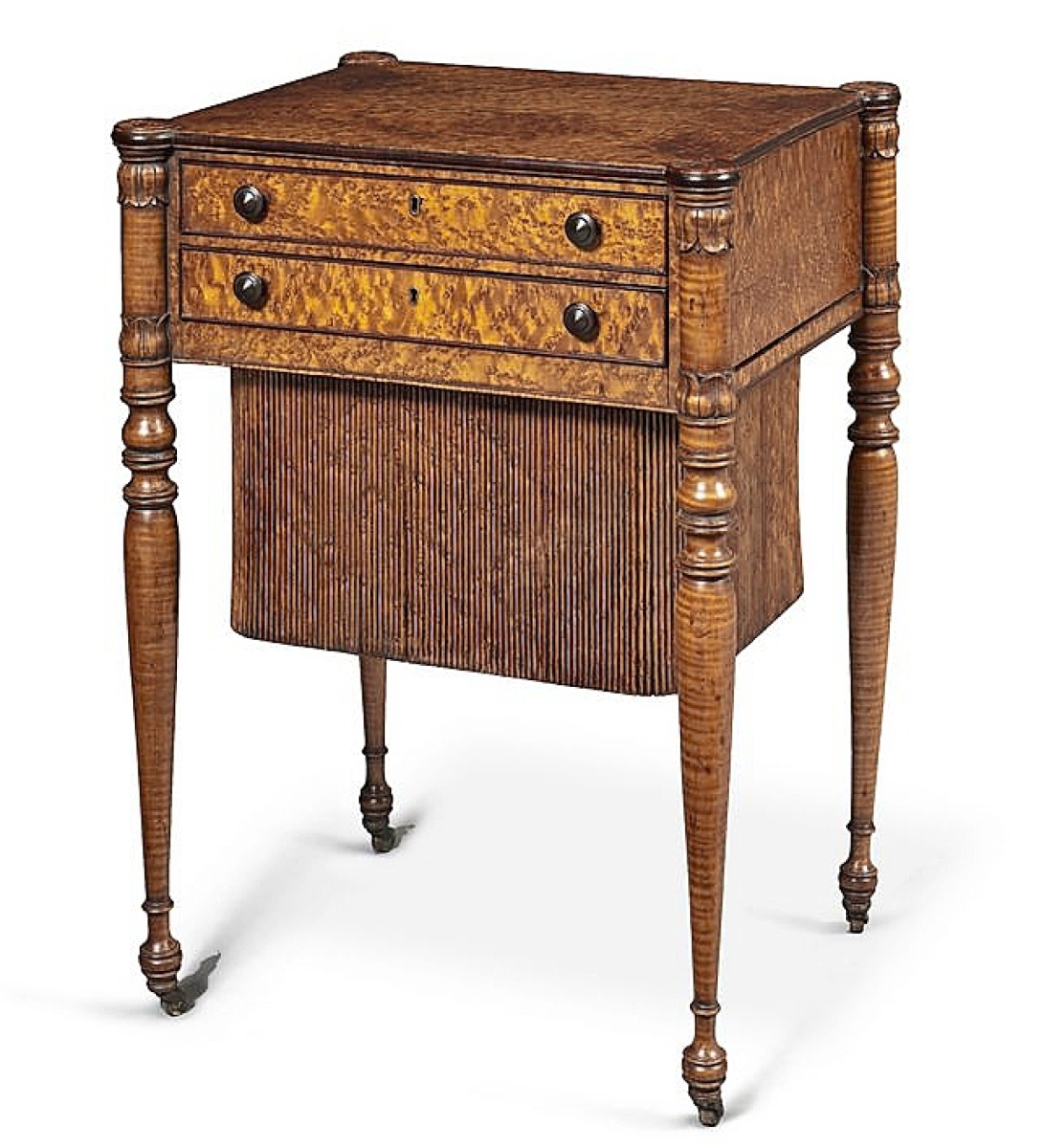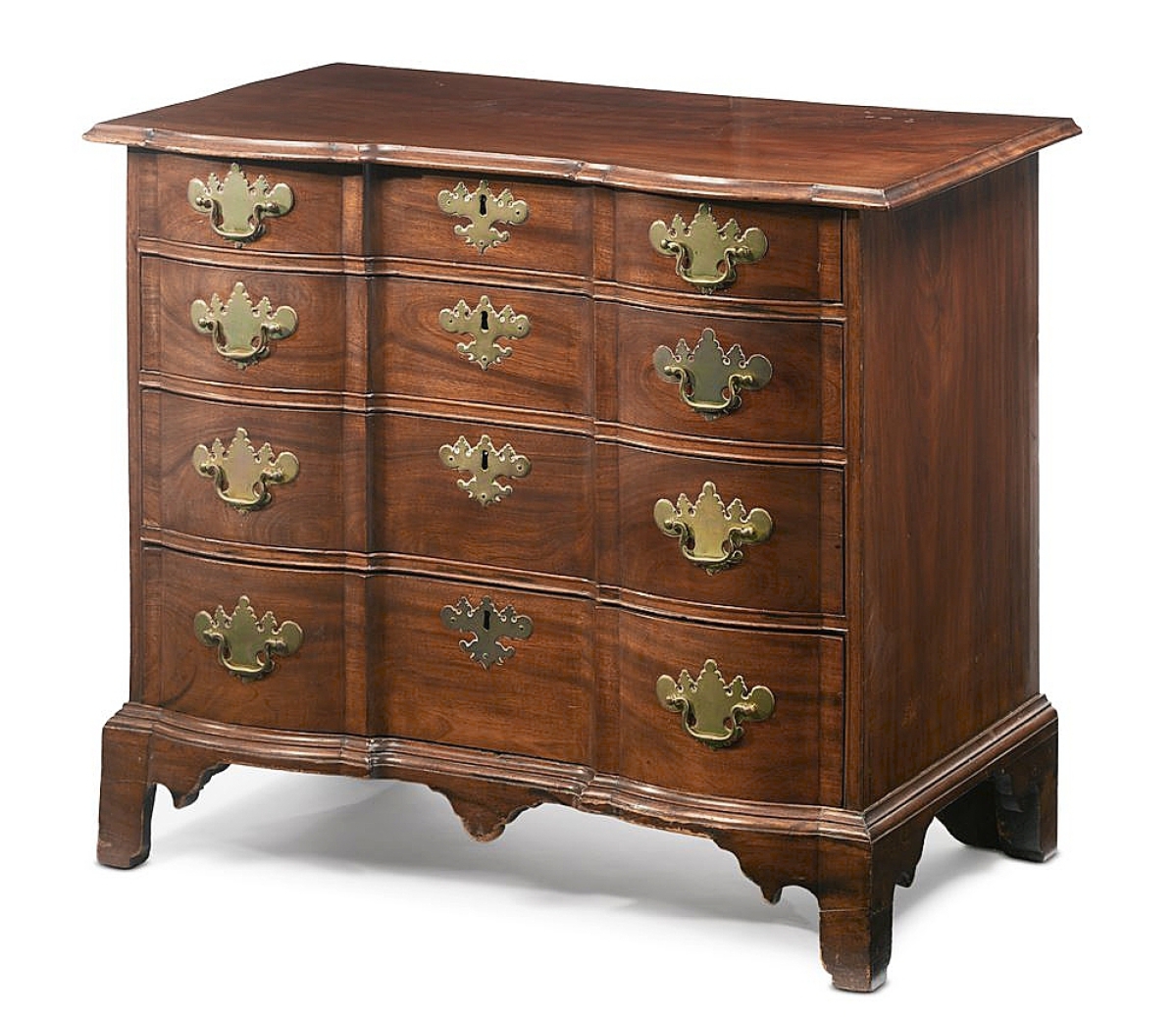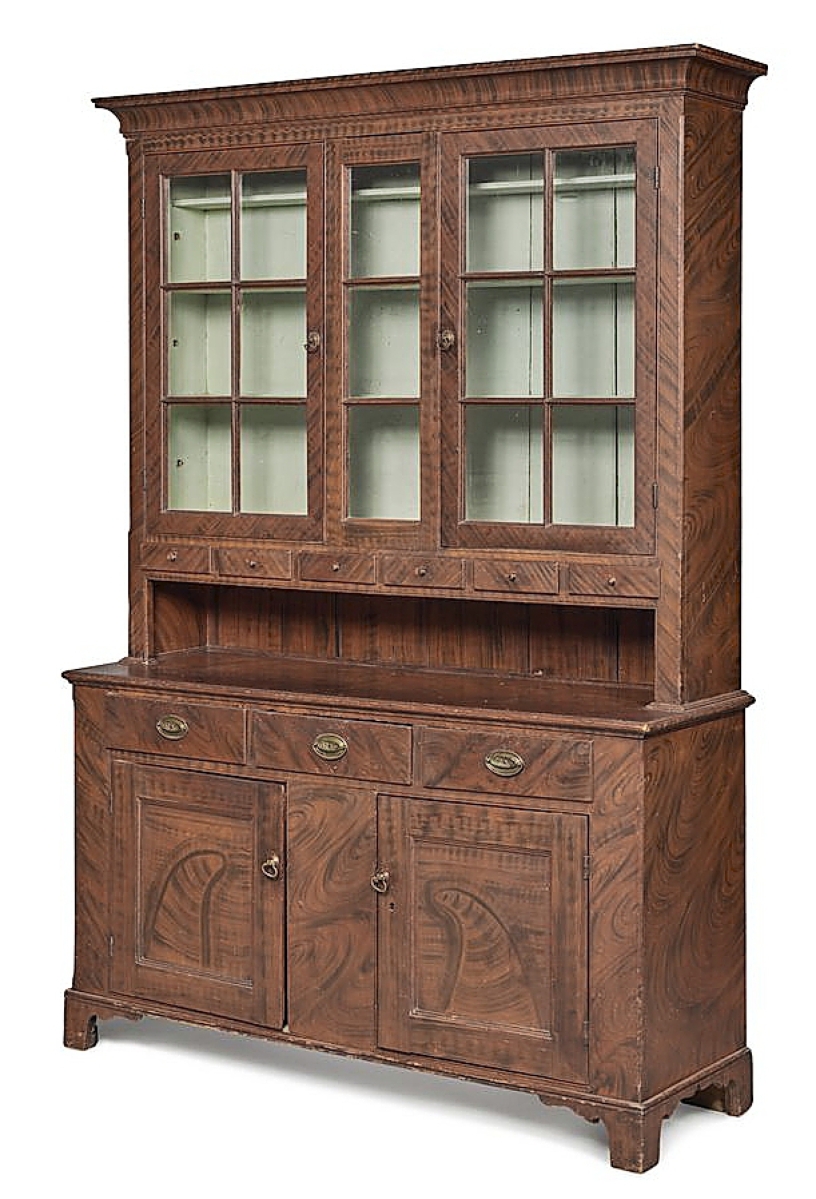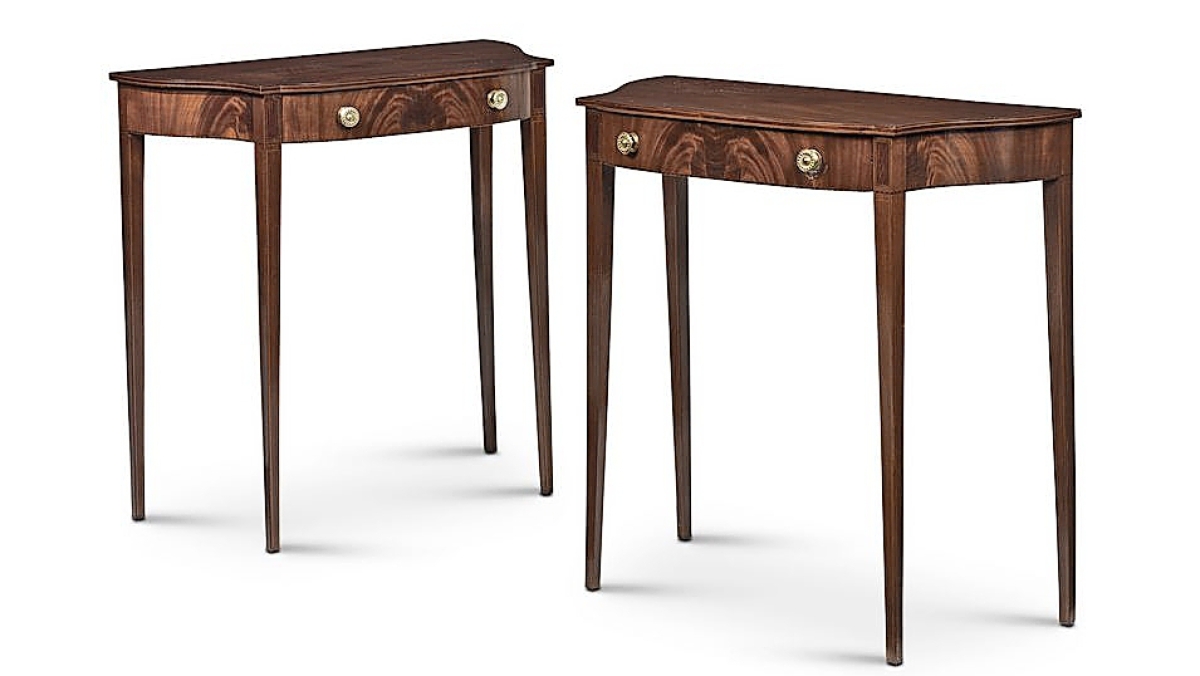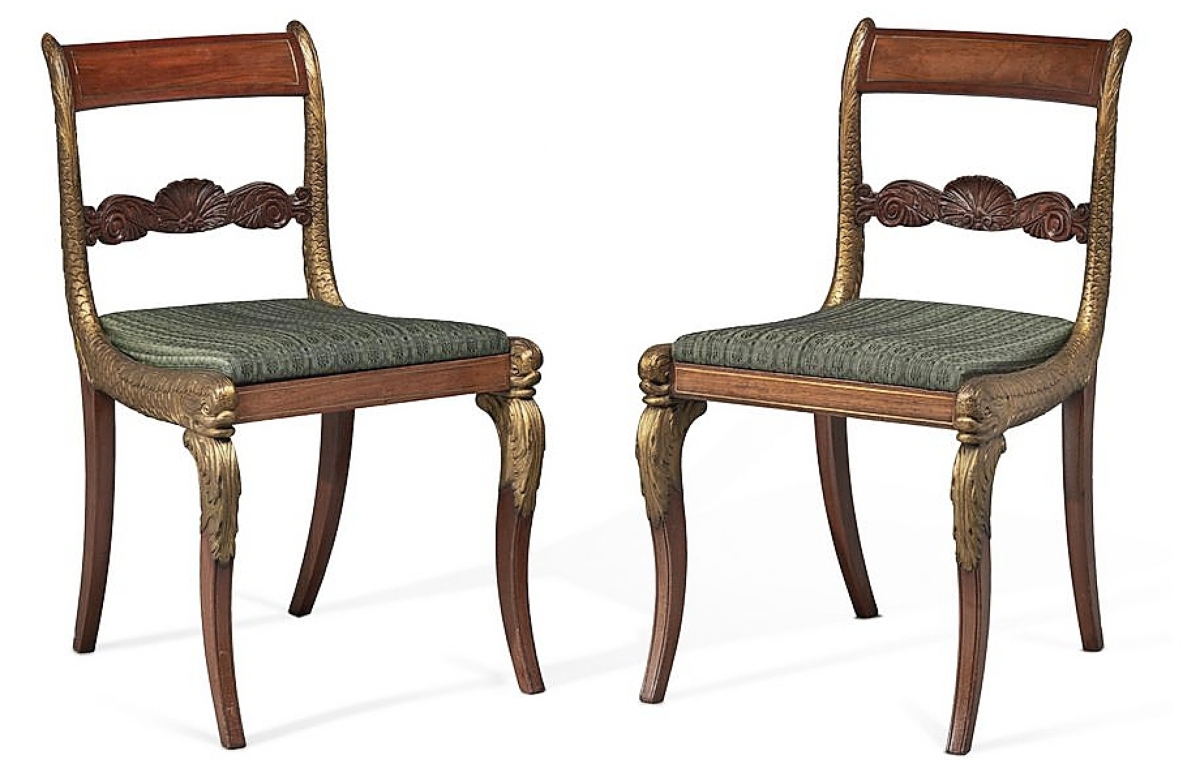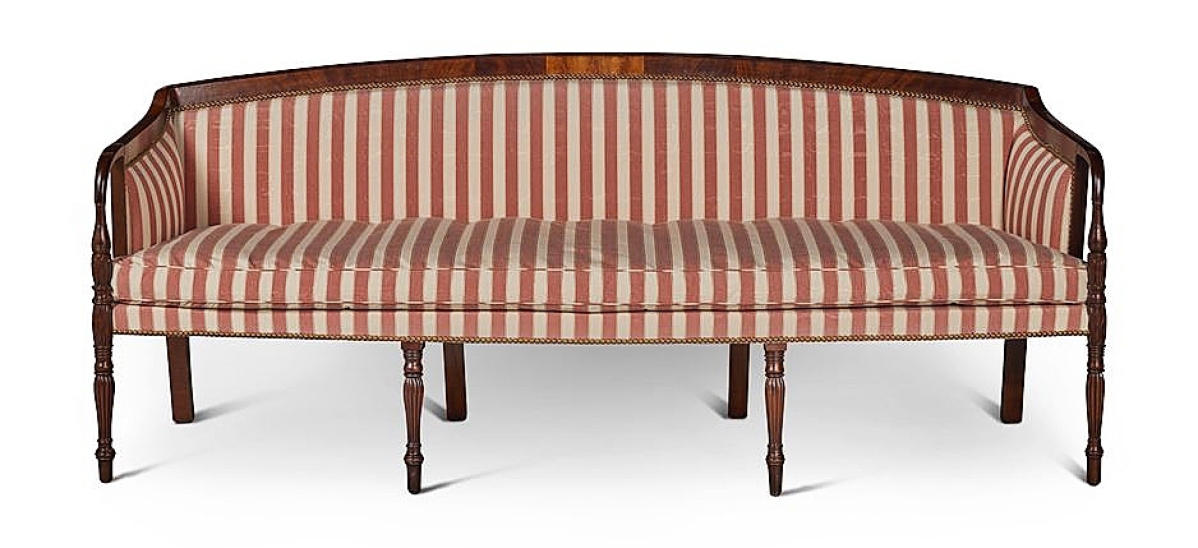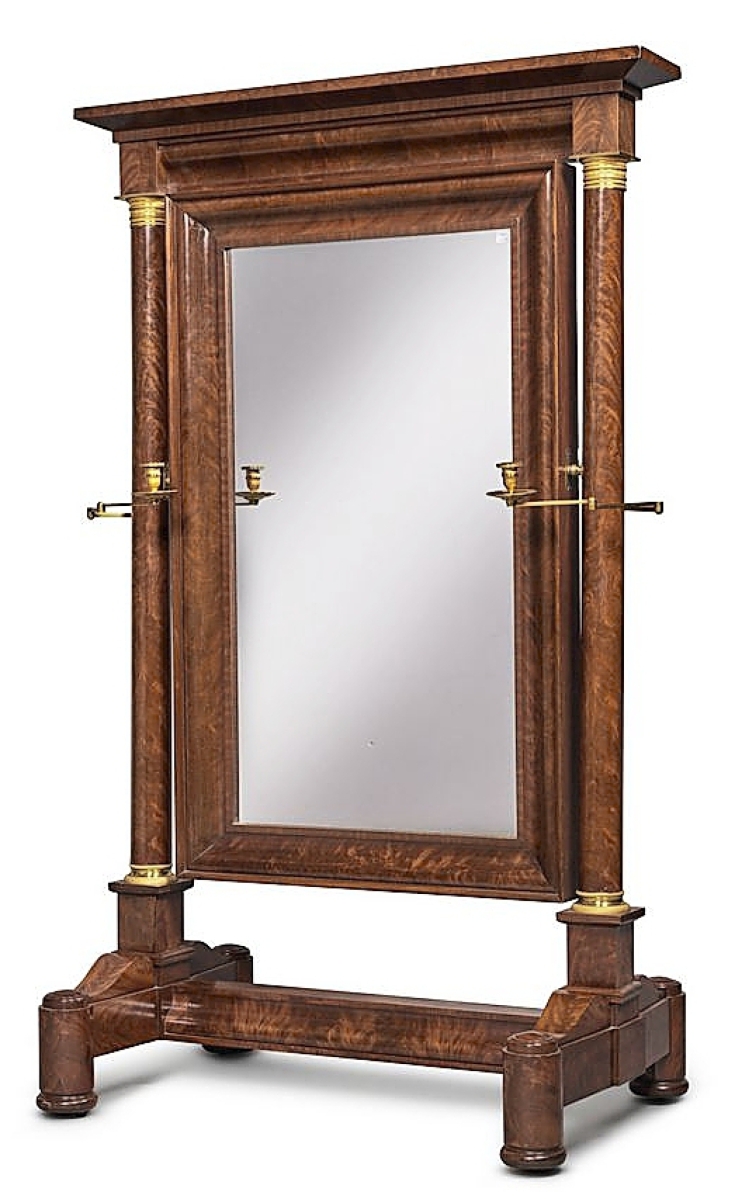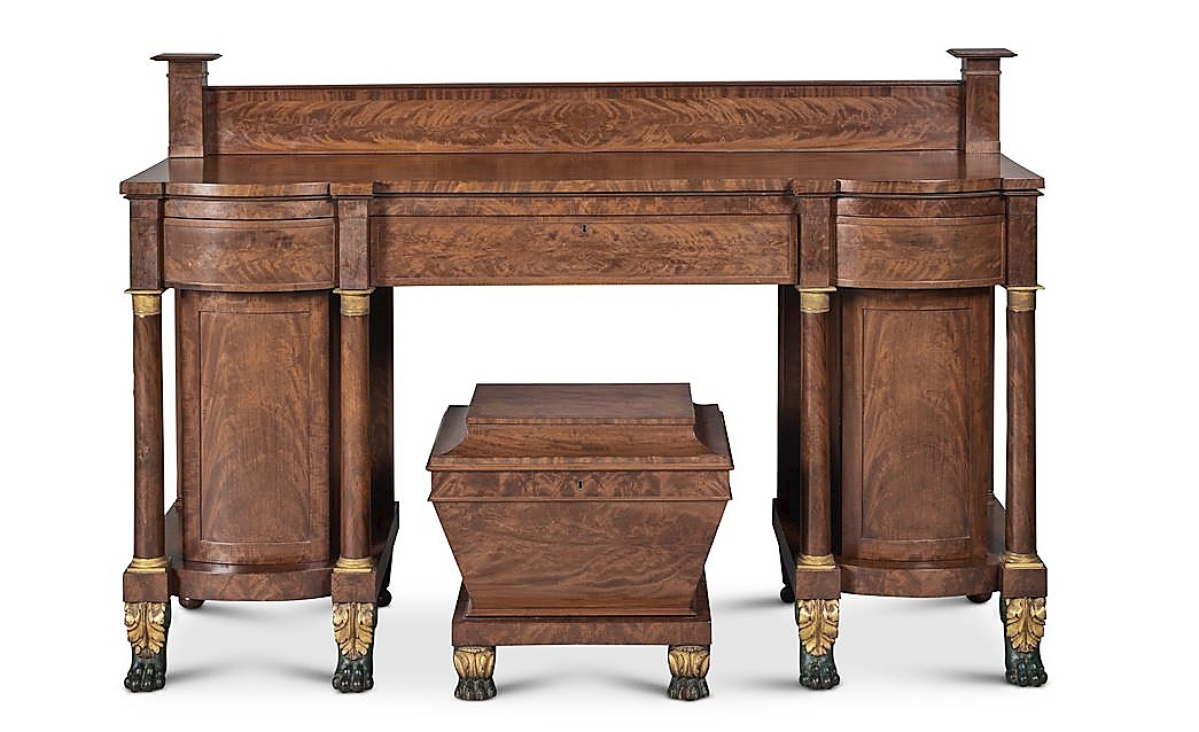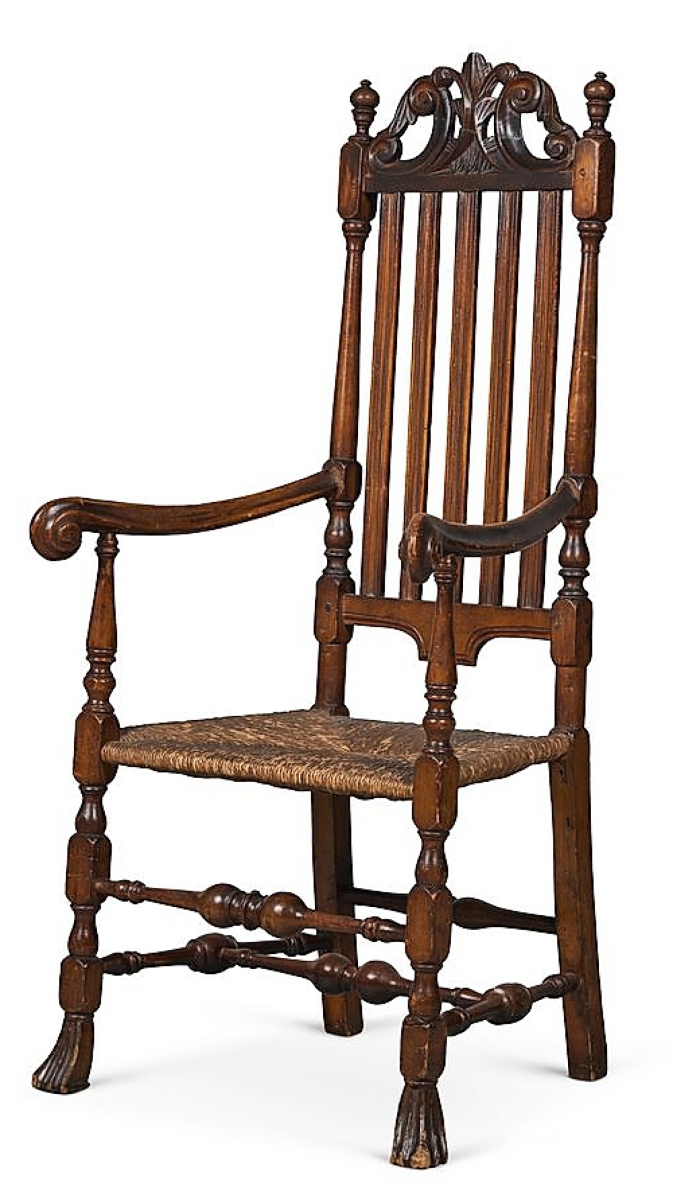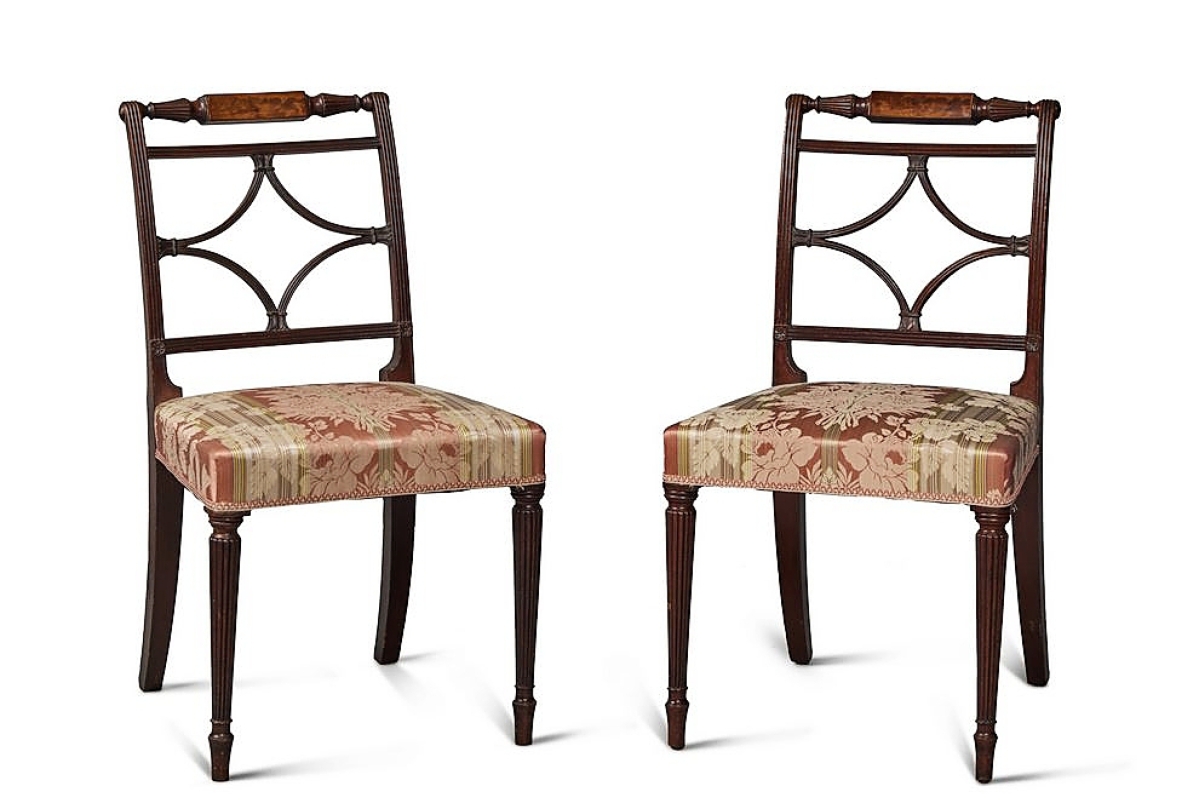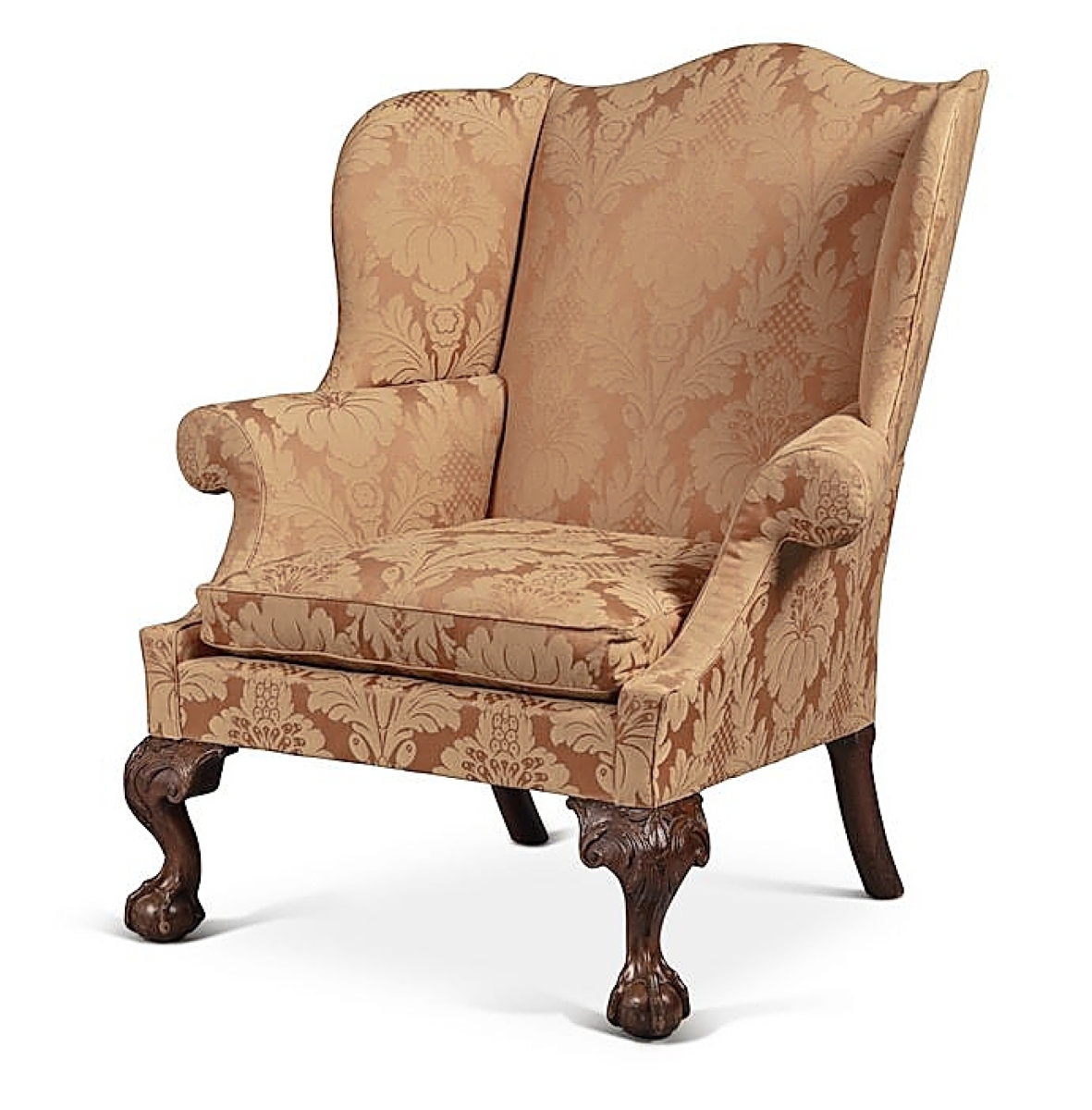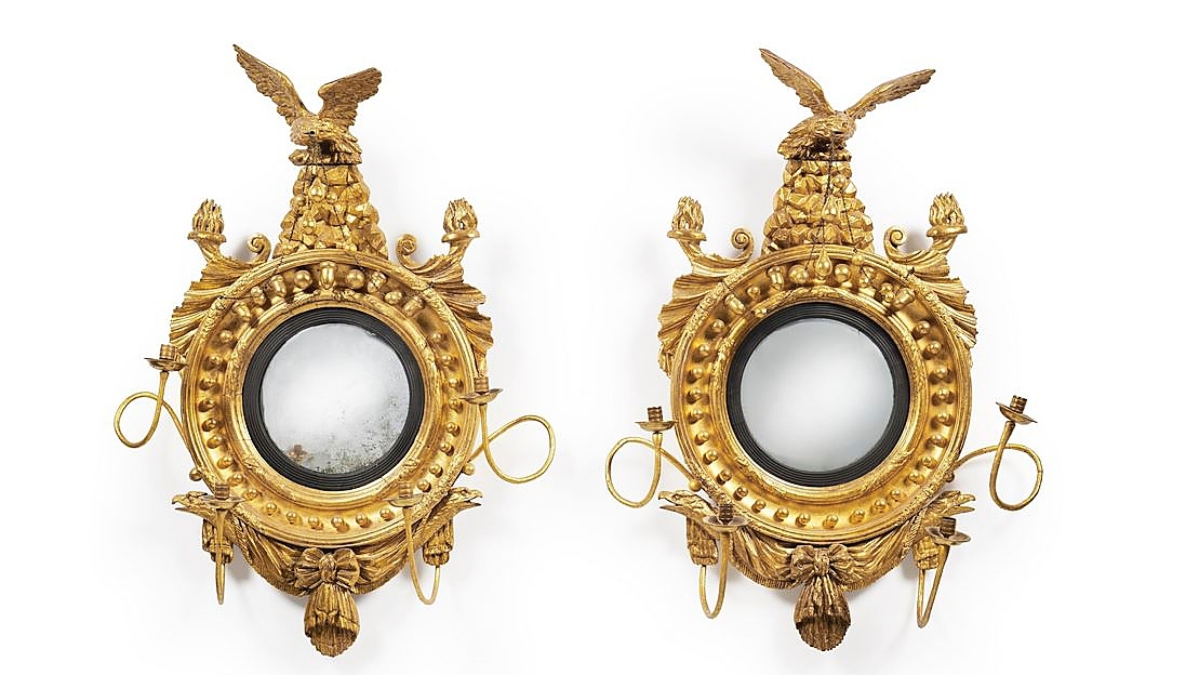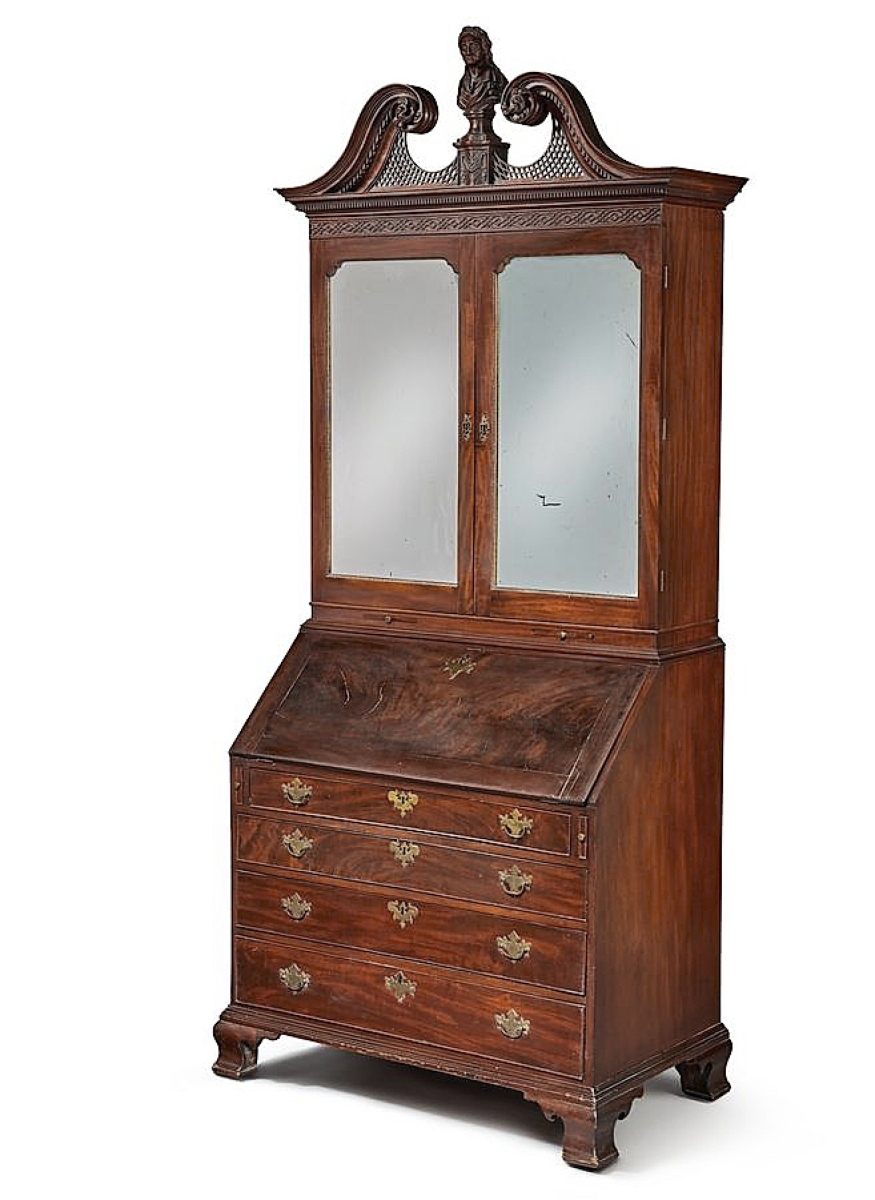
Achieving primacy in the sale at $113,400 was the Potts Family Chippendale carved mahogany desk and bookcase from Philadelphia, circa 1770, with distinctive finial in the form of John Locke ($150/300,000).
Review by Madelia Hickman Ring, Photos Courtesy Sotheby’s
NEW YORK CITY – Private collectors turned out in force and dominated the buyers list at the sale of the collection of Dr Larry McCallister, which Sotheby’s offered on September 22. The sale offered works representing a broad spectrum of American decorative arts, with the furniture category leading the results. With 205 lots on offer, the sale was nearly 82 percent sold by lot and realized a total of $770,994. Noteworthy statistics provided after the sale revealed that 22 percent of buyer’s were new to Sotheby’s and nearly 20 percent of buyers were younger than 40 years old. In recent years, Sotheby’s has sold American furniture only in January, during Americana Week, but department head, Erik Gronning, said the McCallister family wanted things to be sold prior to January. “They’re really thrilled at how well the sale did and pleased that future generations can enjoy McCallister’s things as much as he did,” Gronning confirmed.
The lot with the highest estimate was also the auction’s top lot, the Potts Family Chippendale carved mahogany scroll-top desk and bookcase from Philadelphia, circa 1770, which featured as its finial the bust of English philosopher John Locke. Original elements of the piece included the finial and casters, while the surface was an old historic one. Descending in the Potts family at Pottsgrove, Penn., the piece had been previously handled by Joe Kindig Jr, and in the collection of Mr and Mrs Lammot Du Pont Copeland, which Sotheby’s sold in 2002. Additionally, it had been illustrated three times in The Magazine Antiques, in 1952, 1971 and 1987. According to the sale catalog, it relates to case pieces at the Metropolitan Museum of Art and Bayou Bend, and a few in important private collections. Estimated at $150/300,000, it achieved $113,400.
Coming in at second place for $63,000 was a Chippendale carved mahogany easy chair, also from Philadelphia, circa 1770. The low broad proportions of the chairs, high-relief knee carving and well-articulated talons are among the noteworthy characteristics of the chair, which was closely related to one from the collection of Winterthur Museum. The chair in McCallister’s collection had, at one time, been in the collection of Mr and Mrs Walter K. Jeffords and had sold at Sotheby’s in 2004.
Rounding out the leaderboard at $28,980 was the Williams-Emlen Family Chippendale mahogany double-peaked camelback sofa. The piece had provenance to not one other but two previous Sotheby’s sales, in 1978 and 2016, when it was sold as part of the collection of Irvin and Anita Schorsch of Hidden Glen Farms, Meadowbrook, Penn. When compared to its result in the Schorsch sale – $68,750 – its result in the McCallister auction is a sign of how much the market has changed in the past six years.
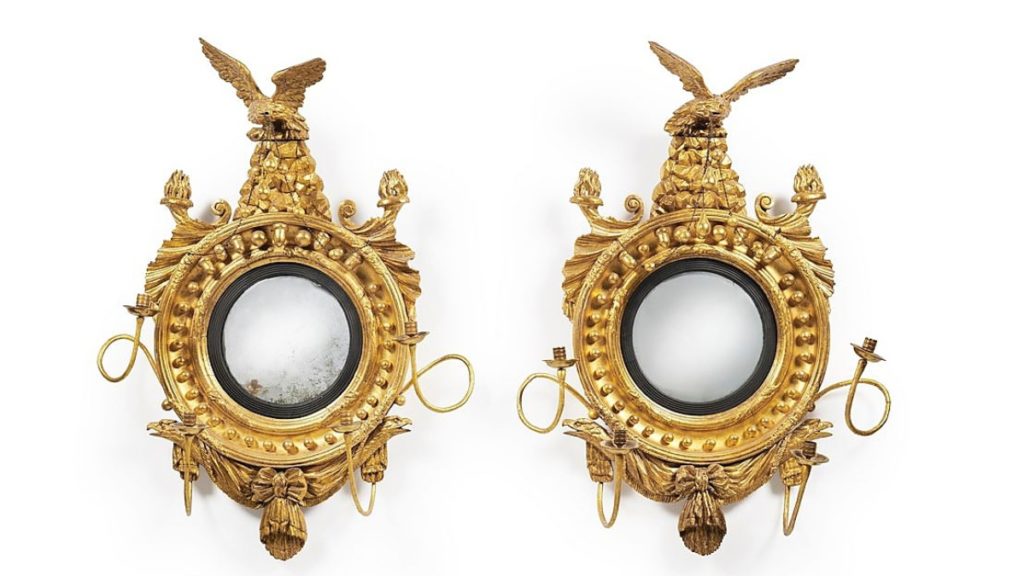
The top price paid for Classical furniture was $25,200, for this pair of carved and parcel-gilt girandole mirrors, possibly made in Albany, N.Y., circa 1820, which had been illustrated in Allison Boor, et al., Philadelphia Empire Furniture (2006) ($12/18,000).
While McCallister’s Philadelphia Chippendale furniture brought arguably the most prominent results, it would be a mistake to assume his collection was narrowly focused; to the contrary, Gronning applauded the diversity of his collecting strategy.
One of the earliest pieces in the collection was a rare William and Mary turned and carved maple banister back armchair from Salem, Mass., that finished at $10,710 against an estimate of $15/25,000. Once owned by Mrs Ima Hogg of Houston, the chair had been published in two volumes on the collection at Bayou Bend: American Furniture, Paintings and Silver from the Bayou Bend Collection by David B. Warren (1975); and David B. Warren, Michael K. Brown, Elizabeth Ann Coleman and Emily Ballew Neff, American Decorative Arts and Paintings in the Bayou Bend Collection (1998); as well as Brock Jobe and Myrna Kaye’s indispensable 1984 tome, New England Furniture: The Colonial Era. Gronning himself was well acquainted with the chair, having cited it in an article he co-authored with Robert F. Trent and Alan Anderson, “The Gaines Attributions and Baroque Seating in Northeastern New England,” which appeared in American Furniture in 2010.
Federal furniture in the sale was well represented and the category saw several top results. Among these was $22,680 for a fan-inlaid and figured mahogany tall case clock with works by Simon Willard (1753-1848), and a carved and figured maple worktable from Boston that bidders chased to $18,900 from a $6/8,000 estimate. The worktable had been sold in a various owners’ Important Americana sale at Sotheby’s in January 2018, when it achieved $27,500 against the same $6/8,000 estimate.
A circa 1800 red and black paint-decorated poplar step-back cupboard from Pennsylvania that Sotheby’s had sold in 1997 realized $16,380, the same price achieved by a pair of Federal inlaid mahogany one-drawer chamber tables with provenance to Mrs Giles Whiting, a 1972 Sotheby’s sale and Americana dealer Israel Sack. Another pair – this time of side chairs – closed at $10,080. The Federal carved and figure mahogany examples were attributed to Thomas Seymour, possibly with John Seymour, dated to circa 1808-12 and had a history of family descent from Governor Levi Lincoln Jr (1782-1868).
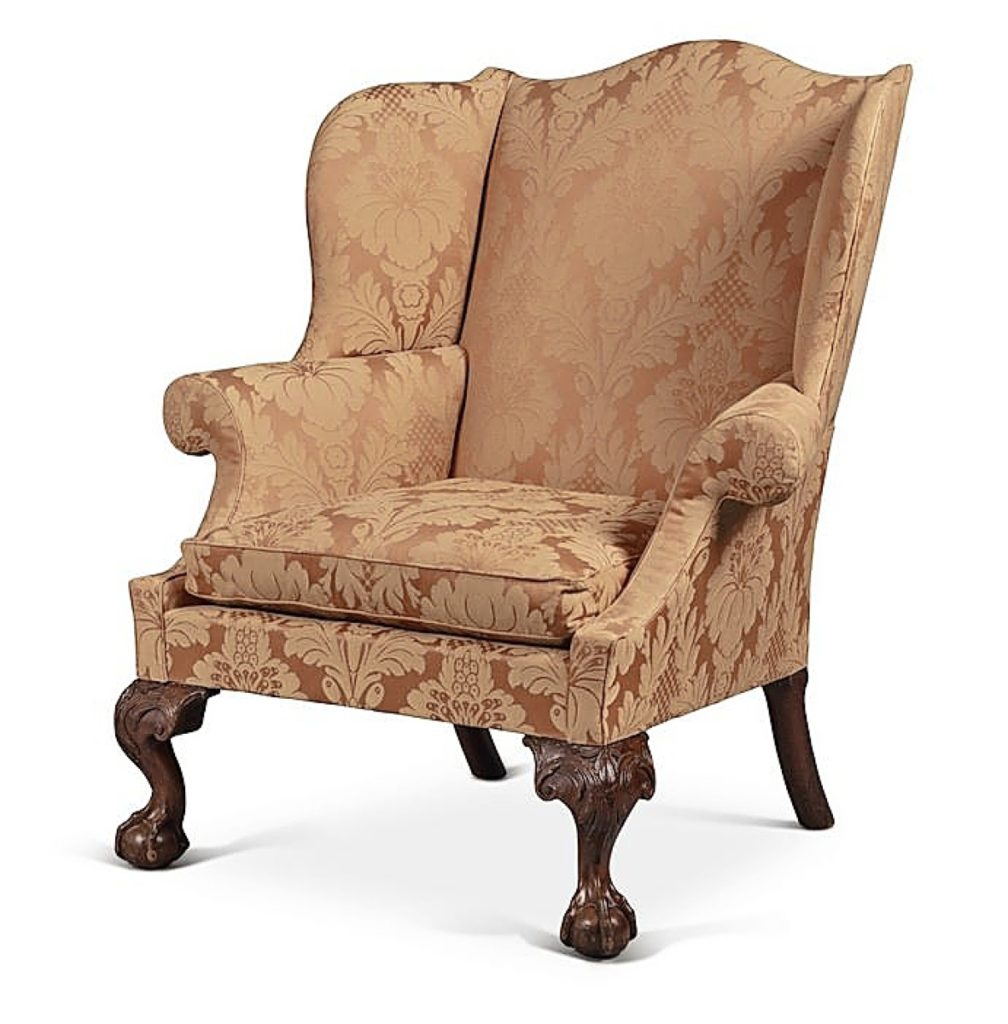
Appearing on Sotheby’s block for the second time was this circa 1770 Philadelphia Chippendale carved mahogany easy chair that finished at $63,000, the second highest price in the sale ($40/60,000).
As the historical styles evolved from the Federal to Classical period, so did McCallister’s collection with a higher proportion of top lots outpacing estimates. Reflecting interest in the form was a pair of Classical carved and parcel-gilt girandole mirrors that made $25,200, exceeding expectations. Also beating the high estimate was a pair of Classical brass inlaid giltwood and dolphin carved mahogany klismos side chairs, made in New York circa 1820, which had once been handled by Hirschl and Adler Galleries of New York City. Estimated at $8/12,000, the pair found a new home for $16,380.
A half dozen or so lots attributed to the prominent New York cabinetmaker Duncan Phyfe were in the sale, with a Classical ormolu mounted figured mahogany cheval glass, attributed to his school, circa 1835, earned $12,600 with an estimate of $2/3,000 and offered without reserve. One of Gronning’s favorite lots was a Classical carved mahogany parcel-gilt vert-antique and ormolu mounted sideboard, which was accompanied by a related cellarette, circa 1815-20. The sideboard relates to one in the collection of the Museum of the City of New York as well as one at the Metropolitan Museum of Art and finished at $11,340.
Towards the end of the sale, a Gothic revival figured mahogany pier table, made by Joseph Meeks and Sons, New York City, circa 1830, soared past it’s $1,2/1,800 estimate and finished at $5,670. The table had once been in the collection of Gothic collector Lee Anderson, whose collection Doyle sold in 2012; it also related to tables illustrated in the book by Katherine S. Howe and David B. Warren, The Gothic Revival Style in America 1830-1870 (1976) and also Jodi Pollack’s article “The Meeks Cabinetmaking Firm in New York City: Part 1, 1797-1835,” The Magazine Antiques (May 2002).
Prices quoted include the buyer’s premium as reported by the auction house.
Sotheby’s will next offer Americana in January 2023, dates to be announced. For information, 212-606-7000 or www.sothebys.com.

